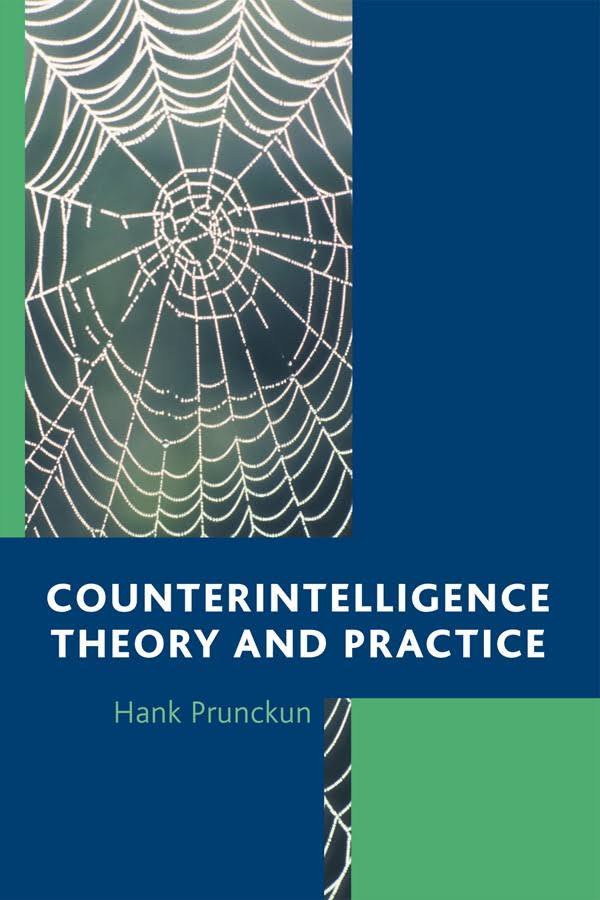Bibliographic information
Title: Counterintelligence Theory and Practice
Author: Hank Prunckun
Publisher: Rowman & Littlefield
Edition: Indian, Pentagon Press. 2014
Chapters: 14
Pages: 239
Hank Prunckun, PhD, is an associate professor of Intelligence Analysis at the Australian Graduate School of Policing and Security, Charles Stuart University, Sydney. Dr. Prunckun has served in the Intelligence and Criminal Justice fields for twenty-eight years prior to his current position.
Counterintelligence Theory and Practice exploring issues relating to national security, military, law enforcement and corporate, as well as private affairs, Hank Prunckun use his experience as a counterintelligence professional to explain both the theoretical basis and practical application for real counterintelligence craft. Each chapter contains key words and phrases and a number of study questions and learning activities that make the book a comprehensive tool for learning how to be a counterintelligence.
Counterintelligence: Theory and Practice fills a long-standing void in counterintelligence literature. In this book, Hank Prunckun provides a practical approach, defining a counterintelligence agency as any organization or even nation state and opposition as any person or group with hostile intent. He uses these definitions to discuss issues such as national security, the military, law enforcement, corporate intelligence, and even private affairs. This book equips a reader with an advanced understanding of the underlying theory that supports the art and science of the craft. As for the book s structure, it is arranged into fourteen chapters. These chapters take the reader from the challenges that arise for counterintelligence agencies to the practicalities of defensive and offensive counterintelligence. The book is universal, covering a range of topics in a funnel approach from the general to the specific. Each chapter concludes with a list of key words and phrases, a number of study questions and learning activities, which make it an excellent text for counterintelligence students and scholars. He explains in the preface to Counterintelligence Theory and Practice that he wrote the book to suggest “new remedies” to meet the “new evils” facing “security of classified information and secret operations.” he suggests and provide “advanced understanding of the underlying theory” of CI, and that is the focus of the present work.
Chapter one begins by introducing the reader to the challenges that face counterintelligence, and it does this through historical examples of counterintelligence lessons. While providing pertinent illustrations of why counterintelligence is so important, Prunckun does not walk the reader through constant mundane examples. He quickly moves on to the fundamentals and theories of counterintelligence, which is what makes this book enjoyable. He provides the context of why counterintelligence is important and then pulls the reader into the world of counterintelligence operations. Prunckun, while demonstrating doctrinal counterintelligence processes, provides his own variation of the theories and practice of counterintelligence.
Chapters two and three discuss the fundamentals and theories of counterintelligence, which he lays out nicely for the most novice counterintelligence reader. In chapter two, he lays out his model for offensive and defensive counterintelligence. He introduces the reader to defensive deterrence and defensive detection, offensive detection, offensive deception, and offensive neutralization.
Later in chapter three he further refines the defensive operations to include physical, personal, and other aspects of security. He is clear when mentioning that counterintelligence is much more than security, and he demonstrates this throughout the book. The subsequent chapters, four through eight, discuss in detail Prunckun’s essential topic, offensive and defensive counterintelligence. One chapter at a time, he walks the reader through how the various aspects of defensive and offensive counterintelligence are utilized, planned, and executed.
In first three chapters After reviewing why CI is needed, Prunckun describes further its “taxonomic categories” in terms of “defense and offense” and the various functions in each category. Then he looks at “counterintelligence topology” using the United States Intelligence Community (IC) as an example. This amounts to listing the intelligence agencies involved and noting that each deals with counterintelligence in different ways while also working collaboratively. Turning to CI theory, Prunckun develops a theoretical model for both the defensive and offensive functions. With a theory of how a system should work, he argues, a practitioner should be able to develop a hypothesis, and test whether the system functions as theory suggests.
The rest of the book is devoted to defensive and offensive CI considerations. With respect to the former, he discusses risk, physical barriers, security, background investigation, personnel security, classification, code names, communication issues, to name a few. Concerning offensive topics, he addresses data collection, deception, counterespionage, double agents, and dangles. There are many aspects to this book to appreciate. For one, each chapter begins with a short listing of what the reader will be introduced to, but the true value is at the end of each chapter. Thoughtful study questions can be found after a short review of the key words found in the chapter. These study questions are relevant and a very nice check on learning for the reader. The work would be an excellent introductory textbook.
The final chapter of the book is on ethics. Ethics in counterintelligence cannot be overstated, and Prunckun does a fine job of laying out the importance of them in not merely a chapter on professionalism or business ethics, but through interesting points that should relate to any reader. Prunckun demonstrates how ethics apply to a myriad of academic disciplines, as most of them can be found within the intelligence community. This book is very readable and contains ample pictures to demonstrate the points or structures being discussed. For instance, when discussing defensive physical security, Prunckun includes pictures of properly reinforced fences and other deterrents, while explaining the value they provide to the counterintelligence mission.



